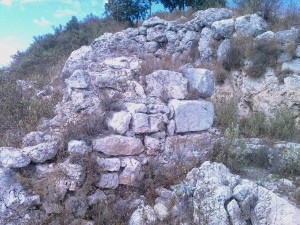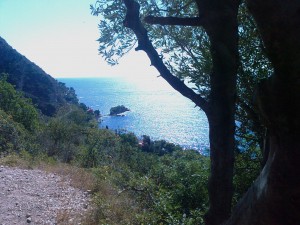It is normal for an author to flatter their readers, to treat them as people of high knowledge and intelligence – why else would they have chosen the book? So it is a bit of a surprise when Judith Herrin begins Byzantium: The Surprising Life of a Medieval Empire by explaining that she was inspired to write it when two passing workmen knocked on her door and asked “what is Byzantine history”. All they knew, she explains, is that it “something to do with Turkey”.
Not exactly flattering to the reader, but be reassured, while at one level this might be a literary version of a popular British television show What the Romans/Victorians/etc did for us, there’s a lot more depth than that, and you’ll finish these 300-odd pages feeling educated, informed, and entertained.
I’ve always had a soft spot for Byzantium, because it has such a wonderful range of powerful interesting women, as I found some 15 years ago when I last studied the subject of its history, although the course I took then resembles some of the texts Herrin describes without approval, as being little more than a long list of emperors and battles. Her Byzantium, while broadly chronological, isn’t arranged like that, but rather list of themes and stories, which overall present a very satisfying overview.
If you’re thinking of Byzantium, then you can only think of the Hagia Sophia, and Herrin provides a reminder that it was not some late flowering of the ancient world, but the energetic burst of something new, and behind it once again was a strong woman – not (just) Justinian’s famous and much maligned empress Theodora, but a wealthy senatorial lady, Juliana Anicia, who had just built a grand church, St Polyeuktos’s, on her own property. But it was Theodora to whom more credit was due, for it was just before the great church was begun that she, ancient accounts seem to agree, stiffened Justinian’s backbone when he was about to flee before a mob riot that conveniently cleared a large tranche of the centre of Constantinople.
It supports, with its very great weight and power, Herrin’s thesis, that Byzantium boasted “a rich ecology of traditions and resources” – it didn’t just passively preserve ancient traditions, as Gibbon claimed, just waiting for the West to be ready to receive them again, but rather creatively and constructively engaged with and developed them:
It bequeathed to the world an imperial system of government built upon a trained, civilian, administration and tax system; a legal structure based on Roman law; a unique curriculum of secular education that preserved much of pagan, classical learning; orthodox theology, artistic expression and spiritual traditions enshrined in the Green church; and coronation and court rituals that had many imitators.”
And when the doomed Constantine XI in 1453 made his final desperate call to the last remnant of the empire, its capital, to resist the Ottoman Turks, he called out in Greek to his people to prove themselves true Romans – to emphasising the continuity of 1,323 years of Constantinople’s history, and much further back. But long before that, Herrin argues, Byzantium’s ability to withstand, albeit eventually in much reduced form, the shock of the Arab onslaught as the tribes burst out of Arabia, in the eighth century that protected a then ill-prepared West, which would otherwise have been overwhelmed.
But this is a book that bears its theses lightly – mostly it is just a fine collection of yarns about a great and complex civilisation over more than a millennium. And you meet a great many interesting women along the way, among them:
- Olympias, a wealthy heiress who supported a nunnery in Constantinople late in the 4th century, which remained in existence for more than two centuries, possibly longer, and in the early 7th century the abbess Sergia wrote an account of the miraculous recovery of its relics.
- Amalasuntha, daughter of the OstroGoth and late western Roman ruler Theoderic, who on his death in 526 became regent for her 10-year-old son, Athalaric.
- Olga, widow of the Rus (Russian) leader Igor, who in the mid 10th century made a visit to Constantinople with an entourage of merchants, interpreters and a Christian priest. She left converted, having taken the historic name of Helena, from the wife of Constantine VII’s. This is seen as the start of the conversion of the Rus. (The Byzantines, unlike Islam, and until the Reformation, encouraged the use of the vernacular in worship.)
- Maria Argyropoulaina, who introduced in the fork to the west, despite initial claims that they were pretentious. She had been married to Giovanni, son of Pietro II (doge 991-1008) after Venice helped Byzantium thwart an Arab siege at Bari. Sadly, although after they were married in Constantinople in 1004, returned to Venice to much acclamation and had a son, all three then perished in an epidemic.
- Kale Pakourianos, widow of a Georgian military commander for Byzantium, who supported the Georgian monastery of Viron on Mount Athos.
- And of course there’s the celebrated historian Anna Komnene, who has a whole chapter to herself, as a writer of a work that Herrin considers “bold, novel and surprising”. Herrin adds: “No other medieval woman, East or West, had the vision, confidence and the capacity to realize an equally ambitious project”.
read more »



 About
About